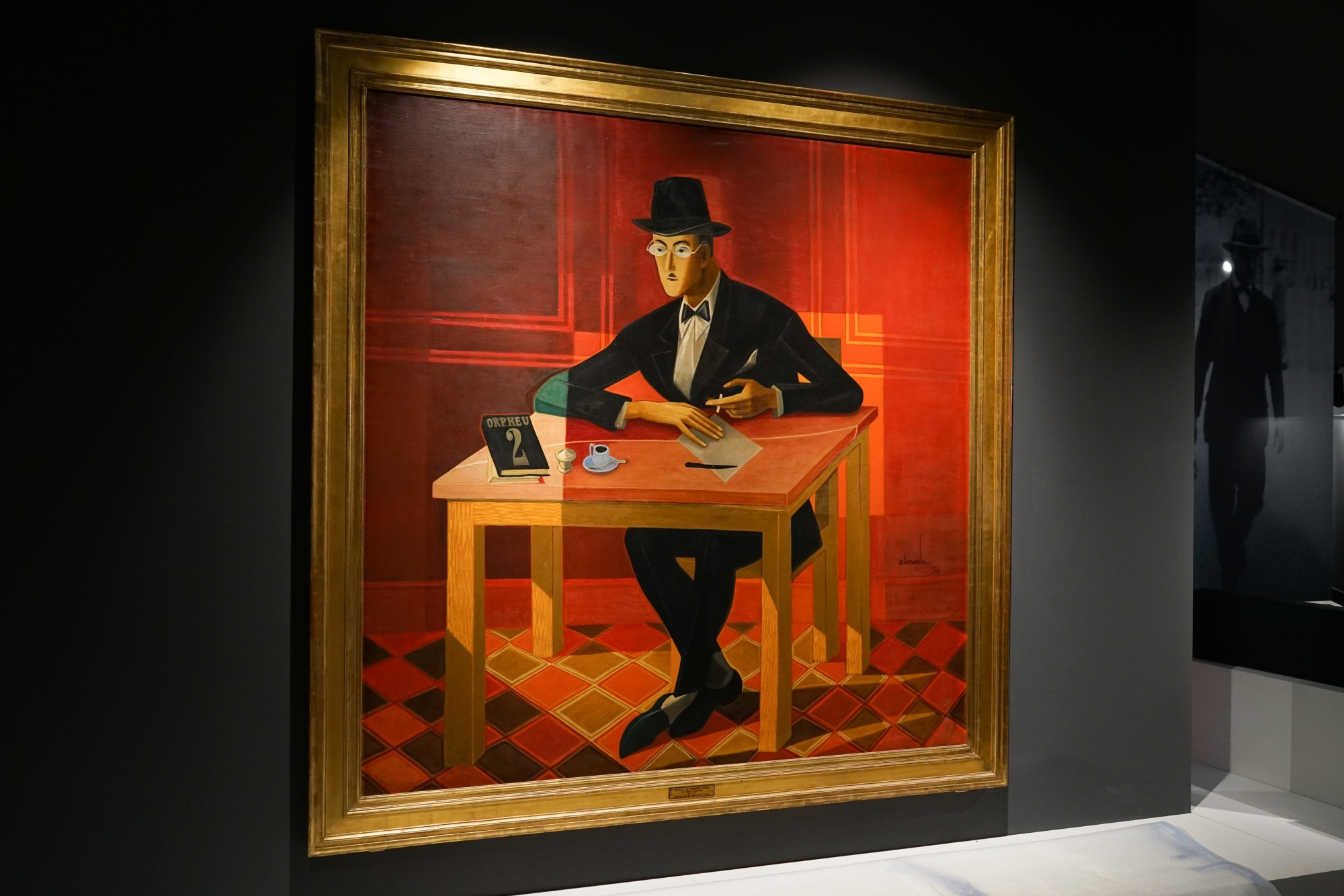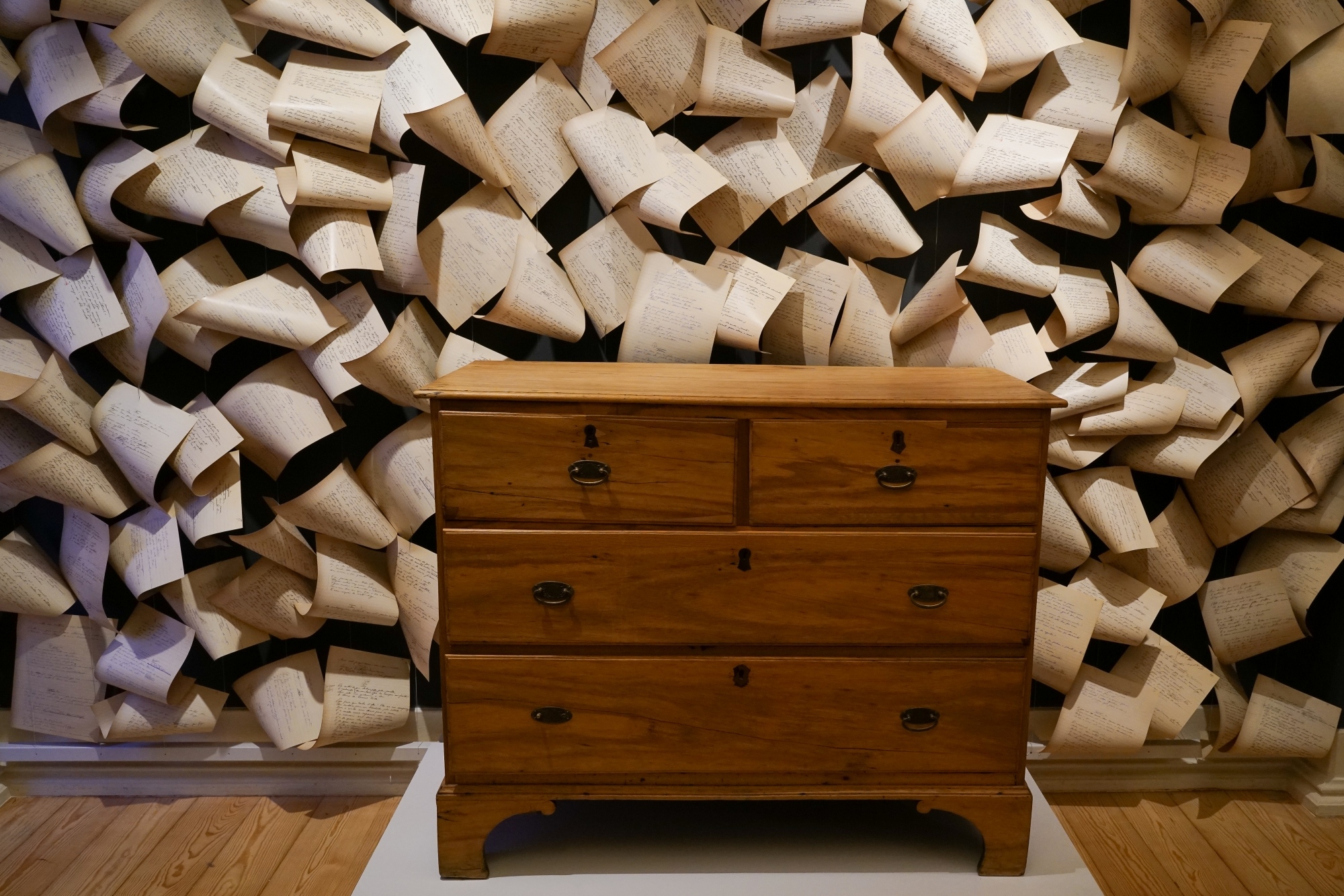The Exhibition
Memory, literary creation, reading, address, are the keywords of this new long-term exhibition at Casa Fernando Pessoa. Our aim is to present Fernando Pessoa to our visitors in a more intimate, accessible, participative and complete way. We wish to share knowledge about Fernando Pessoa while, at the same time, spreading the word by underlining the power of literature and the effects of reading.
Memory, literary creation, reading, address, are the keywords of this new long-term exhibition at Casa Fernando Pessoa. Our aim is to present Fernando Pessoa to our visitors in a more intimate, accessible, participative and complete way. We wish to share knowledge about Fernando Pessoa while, at the same time, spreading the word by underlining the power of literature and the effects of reading.
The exhibition is organised on three different floors, in the form of separate “chapters”. The first of these is “the heteronyms”, where visitors are immediately brought into contact with Fernando Pessoa’s innovative literary game: the creation of the heteronyms, the complex and entertaining system that is Pessoa’s distinctive hallmark in the history of literature. Also displayed here are the works of art portraying Fernando Pessoa, such as the famous painting by Almada Negreiros or the drawings by Júlio Pomar.
Besides introducing visitors to the figures with whom Pessoa chose to present himself, the museum also offers the chance to enjoy very close contact with these artistic works in which the writer is represented.

In Casa Fernando Pessoa’s long-term exhibition, visitors can see the famous painting that pays homage to the poet: “Fernando Pessoa reading Orpheu”. This portrait was painted by the Portuguese modernist Almada Negreiros in tribute to his comrade and friend.
There are more works of art displayed throughout the exhibition, some of which are recent additions to the museum’s collection. During the course of your visit, you can also read or listen to poems and other texts written by Pessoa.
The area given over to Fernando Pessoa's Private Library occupies a central position in the exhibition, which is why we say that this space is the heart of Casa Fernando Pessoa. Most of the books that belonged to Fernando Pessoa are exhibited in a kind of safe. Although they have all been converted into a digital format, in recent years they have been kept under safe protection for conservation reasons. Now, in keeping with all the current rules, they can also be displayed to visitors. This valuable set of books, which are classified as a National Treasure, reveal the writer that Pessoa was through the books that he read, and the marks that he made in them. A reading table displays various editions and different translations of Pessoa, making it possible to enjoy several readings of his work. It serves as an invitation to stop and read them, without any physical barriers between the reader and the literature.
Pessoa lived in the apartment on the right side of the first floor of this building for 15 years. The floor plan of this apartment has been reconstructed, and it is also possible to see here various documents and objects that belonged to the writer. These pieces enable us to discover various episodes from Fernando Pessoa’s life in Lisbon, where he had more than 16 different addresses, as well as from his life in South Africa, where he spent his youth and where he first began to put his private library together. They also bear testimony to life in the city at the time when the writer lived here, and the literary circles in which he moved.
Visitors are also shown what artistic life was like in Lisbon in the years when Pessoa lived in the city, together with his occupations and the texts (both in his own name and in those of other authors) that he published in his lifetime. The exhibition ends with the story of the creation of his singular and heavily populated literary universe, told in Pessoa’s own words.
This long-term exhibition is designed to be accessible to audiences of all kinds. There are no physical barriers placed in the way of visitors, and the texts have been written in a clear language. Special resources are available for deaf people and the visually-impaired.
It is a work in progress, and we will continue to do our best to improve it, introducing different novelties and adapting it to the needs of our visitors.

“On a day when I had finally given up – it was the 8th of March 1914 – I stood by a tall chest of drawers and, taking a piece of paper, I began to write, standing up”
In a letter to Adolfo Casais Monteiro, 13 January, 1935.